Text
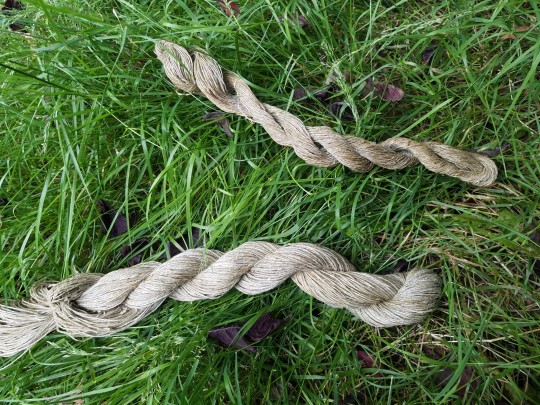
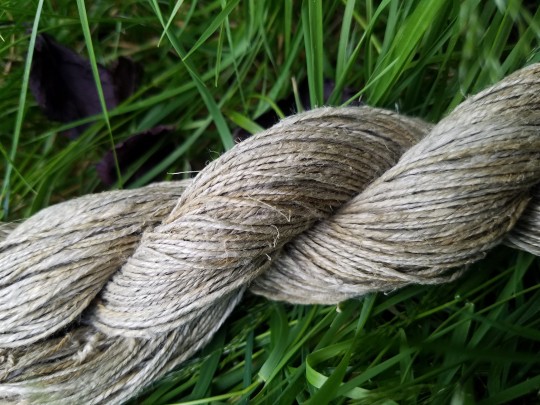

I kept forgetting to take pictures, but heres the finished hemp ! Ive already forgotten the yardage of each, sadly. The big skein has been abraded somewhat, and the little skein not at all, and the color and touch are very different.
105 notes
·
View notes
Text
What’s So Great About Hemp Plastic?
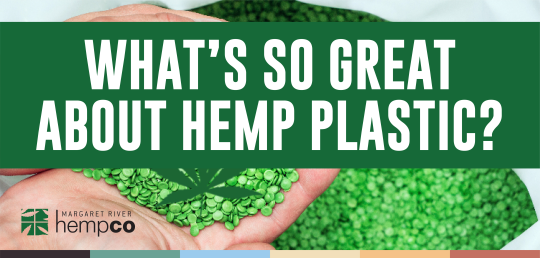
The use of plastic is one of the most damaging habits we have as humans… Just take a look at the great pacific garbage patch for example.
But it’s not like it all goes there. That’s just where the current takes a lot of it. Unfortunately, our plastic addiction has contaminated all but 13% of all fish in the great barrier reef in our very own home in Australia. Isn’t it just tragic?
As if this isn’t bad enough, commercial plastics used in most packaging all require fossil fuels to be manufactured. A lot of energy goes into making plastics, and the byproducts after making them also take a toll on the environment. So not only are we destroying our oceans, but also contributing to the draining of resources and polluting the rest of the environment around us.
The nail in the coffin?


Most plastics will take at least 500 years to break down. Even then, the microplastics will continue to pollute marine life all over the ocean…
As it is, it’s said the average person consumes around a whole credit card worth of microplastics in food and drink every single week – that’s about 20 grams!
But rest assured, as small batches of composites called ‘bioplastics’ are starting to pop up all over the world, which can offer temporary solutions to our plastic habits as we start to change the way we use them.
Enter hemp – One of the newest kids on the bio-plastic block.
Recently, companies have started to develop hemp plastics and that do not contain any of the toxic chemicals that can cause harm to both humans as well as the rest of the ecosystem we exist in.
Basically, hemp plastic offers a non-toxic, biodegradable, earth-friendly solution to one of humanity’s greatest problems. To top it off, it’s much stiffer and 2x as strong as what we like to call ‘plastics from the past’.
Hemp… what can’t it do?
The Making of Hemp Bioplastics
Hemp is very easy to grow and grows extremely quickly. It’s one of the fastest-growing crops on earth, with an average turnaround of around 3 months. As a fast-growing weed, it outgrows competing weeds before they have the chance to break through the canopy, which virtually eliminates the need for herbicides. Chemical pesticides are also rarely required, as hemp is a very pest-resistant crop.
One of the coolest things about hemp is something we talk about often… Hemp consumes a LOT of Co2 through a process called carbon sequestration, which can then be locked into the plastics that are made.
Yep, it requires so much Co2 to grow that it cleans our atmosphere. A similar process called phytoremediation also cleans the soil. You can read more about these in our blog about 7 ways that hemp is helping us build a sustainable future.
Once grown, it is harvested and processed, the stems are usually separated and further refined into hemp biomass. Stems are used because they contain anywhere between 70-80% cellulose. From the biomass, the cellulose can then be processed further and used as the basic building block for hemp bioplastics.
Simple – kind of…
Are Hemp Bioplastics Currently In Use?
You may ask when this concept of hemp plastic was made popular in the public eye. It might take you by surprise to hear that it was not a recent development!
In 1941, a pioneer in the automotive industry by the name of Henry Ford went public with a car prototype called the ‘Model-T’. There are unconfirmed stories of this running on hemp fuel, but what is widely known is that the body of the car was made from hemp-based plastic.
Unfortunately, it was made sure that this was never mass-produced. A couple of years later, hemp went from one of the most predominant crops in society, to being outlawed completely. Could you imagine what the world would look like if Henry Ford got this out to the masses? (Read more about Ford’s Model T, and his ideas for Biofuels here.)
However, the period of prohibition in the United States is over. We can grow hemp here in Australia now. And even Thailand just legalised cannabis and started educating their youth on it. But what does all this mean? It means there’s more progress towards this reality every single day.
Finally, over the last 10 years, there have been new developments in the field of hemp bioplastics
Notable companies implementing hemp plastics
Entwined™ Hemp 3d Printing Filament:
3D printing technology is stirring quietly in the background, quietly making leaps and bounds towards viable, commercial printing options. “But what about eco-friendly options?” you may ask. Well, now there is one – and it’s made from hemp! Entwined™ offers a 3d printing filament that’s based on hemp. It still uses a poly-blend, but we think it’s a massive step forward in this field.
Sana Packaging
Made from a blend of 30% hemp and 70% other plants, Sana packaging offers hemp packaging solutions to relevant medical and recreational marijuana industries. They also make plastics using 100% reclaimed ocean plastic. Packaging is a huge issue in the marijuana industry in the U.S.A, which Sana hopes to help address by utilising the very plant that is being sold inside the packaging. We hope that one day, this technology will be adopted by the Australian market in one way or another!
Hemp Plastic Company
The Hemp Plastic Company is a Canadian R&D company that aims to develop commercially viable hemp-based bioplastics that can be used in place of traditional plastics. Currently, they have a range of options available to cater to the needs of customers around the world.
You can check out their whole range here! You’ll be glad to know that they stock a 100% hemp bioplastic, that you could buy today!
Conclusion
So, hemp plastics are starting to look like quite the breakthrough, aren’t they?
The main reason we wanted to write this was to bring some awareness to the fact that our abuse of single-use plastics is causing exorbitant amounts of damage to our planet. But before leaving on a note of doom-and-gloom, we also want people to know there are solutions!
It’s not just hemp bioplastics offering solutions. Another great example of high-cellulose crops is sugarcane and corn. Basically, anything high in cellulose can be used to make cellulose-based bioplastic. On top of that, you have other bases like bio-resins. It’s all pretty nitpicky stuff, but if it’s what you want to learn more about, we encourage you to do so!
There are also people like Boylan Slat, who are making breakthroughs in cleaning up the plastics currently residing in our oceans! The Ocean Cleanup Project recently completed their first successful prototype, which they will eventually scale, and use to clean up their goal of 50% of the Great Pacific Garbage Patch in 5 years.
So, it’s not all doom and gloom. And there are lots of solutions – Hemp is one of them.
Do you think hemp bioplastics will take off? What do you think the commercial biggest use of hemp bioplastics will be in the future? We’d love to hear from you!
Learn more about whether Hemp can help solve plastic pollution here.
#plastic#Hemp#industrial hemp#ecofriendly#hempcommunity#margaret river#australien#hempseedoil#natural products#hemp protein#healthcare#Hemp Plastic#hemp products#hemp news#made in australia#recylcing#recycling#waste#Plastic Free July#HempCo
7 notes
·
View notes
Text
Hemp Seed Oil For Pets | Health Benefits And Uses
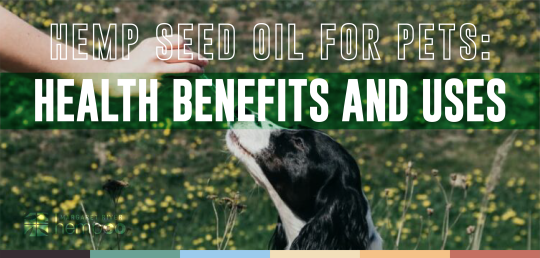
First things first: Anything with an endocannabinoid system can benefit from hemp.
Hemp seed oil for pets is a fascinating topic, especially considering its incalculable benefits. But even though it has such an impressive array of advantages, pet owners are often oblivious to this amazing natural herb… and fair enough, it’s been illegal and misportrayed for so long!
But this is no longer the case, so we want to help spread the word of how everything on this planet can benefit from hemp – not just humans.
…So don’t worry if you haven’t heard much about it yet. In this article, we’re going to bring you up to speed on all the benefits of hemp seed oil for your pets – dogs and cats alike!

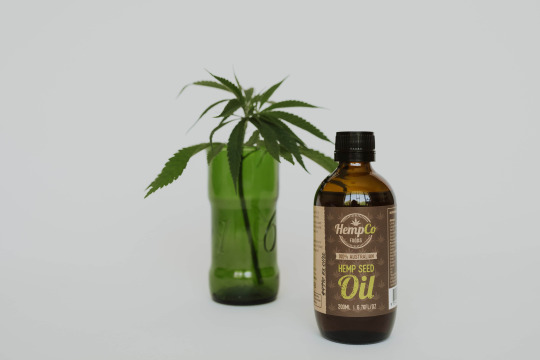
Hemp Oil Vs. Hemp Seed Oil For Pets… What’s The Difference?
Hemp oil (also known as CBD oil) is a medicinal product that’s manufactured from the flower of the female Cannabis sativa plant. It’s quite high in cannabidiol (CBD) and other cannabinoids and can contain THC, the compound that is reported by Wikipedia to be the principal psychoactive in cannabis.
This is one of the main ‘medicinal cannabis oils’ that we’ve been hearing so much about recently! As it seems, it’s becoming widely used for pain relief for humans and pets across the world. Hemp Oil is essentially a concentrated extract of the medicinal compounds of the cannabis plant, and therefore contains high amounts of cannabinoids.
Hemp seed oil, on the other hand, is the oil extracted by cold-press from the seeds of the same cannabis plant. Legally speaking, hemp seed and hemp seed oil in Australia should have less than 0.3% THC to be sold. This oil contains only slight traces of THC and CBD.
Therefore, you can legally use hemp seed oil without a prescription for yourself or your pet animals in Australia. The composition of the hemp seed oil is perfect for pets. In fact, it’s one of the only natural food in the world that has Essential Fatty Acids (EFA) like Omega 6 and Omega 3 in the optimum ratio of 3:1.
But that’s not all. With a newfound interest in this often-neglected plant, researchers seem to be finding more about the diversity of its benefits every day. Let’s take a look at a few ways that pets can benefit!
Benefits Of Hemp Seed Oil For Pets
Hemp seed oil can truly be a life-saver for your pet. But that doesn’t mean you need to use it only in times of distress and sickness. In fact, hemp seed oil could – and should – be used in your pets routine diet. Here are a few reasons why!
Improved Skin And Coat
Hemp seed oil can improve skin health in both dogs and cats, leaving them with a fluffy, irresistibly cuddly coat. As mentioned above, hemp seed oil has the perfect composition of Essential Fatty Acids (EFA) like Omega 6 and Omega 3 in the ratio of 1:3.
Omega fatty acids are one of the most important factors for skin and coat health in animals.
Hemp Out Agency mentions in their article that the unbalanced composition of Omega 6 and Omega 3 in your pet’s diet can cause major upsets in its health. With extra Omega 6, your pet’s body would further reduce its Omega 3 levels.
Similarly, with an excess of Omega 3, the body would cut back on Omega 6. This can lead to serious instabilities in your pet’s body. As a result, other unbalanced sources of Omega fatty acids like fish oil can not be relied upon.
The fact that it is a perfectly balanced source of Omega-3 and omega-6 fatty acids further magnifies the importance of incorporating hemp seed oil in your pet’s diet.
Treating Skin Allergies
Any oil that is so perfectly balanced with Essential Fatty Acids would certainly work well for skin allergies and diseases. A 2005 research noted that Atopic Dermatitis (Eczema) patients experienced reduced allergic symptoms with the dietary use of hemp seed oil.
…And that’s just getting started! There are many other notable benefits of hemp for pets, which you can read more about here
Safe Use And Dosages Of Hemp Seed Oil For Pets
We often hear questions like, “how much hemp seed oil should I give my dog?”
Hemp seed oil is comparable to sunflower oil – and is perfectly safe for your pets. It does not contain any psychoactive compounds like THC and includes minimal amounts of CBD as well.
So, you can even incorporate hemp seed into your cat or dog’s meal without fear. The general rule of safe dosage is 1ml – 5ml depending on your furry friend’s weight.
On the other hand, CBD oil (or hemp oil) is used as medicine and only a vet can prescribe a proper dosage for it. Unfortunately, not much research has been conducted on safe levels of concentrated CBD oil for pets.
Will Hemp Seed Oil Get My Pet High?
No. Hemp seed oil will not get your pet high. The psychoactive chemical in Cannabis that gives the sensation of being “high” is THC (Tetrahydrocannabinol). With that said, there’s virtually no THC in hemp seed oil. Therefore, our furry friends would have to get into a lot of hemps to get high – just like humans!
All in all, hemp seed oil for pets is not just safe – but highly beneficial as well.
Check out our Hemp Doggie Treats by clicking here.
#Hemp#hempcommunity#ecofriendly#industrial hemp#australien#hempseedoil#margaret river#healthcare#hemp products#cbd#hemp news#hemp oil#essential oils#oil and gas#midnight oil#hemp protein#natural products#made in australia#fish oil#skin care products#pet lovers#pet videos#dog blog#pet blog#pet oil#oil for pets#hemp seed oil#HempCo
3 notes
·
View notes
Text
Is Hemp Stronger Than Steel?

On the surface, this proposition may seem ludicrous to the uninitiated – How can the humble hemp plant possibly be a match for the strength of steel?

I mean, let’s first take a look at steel; Kingdoms have been won and lost with the swing of a steel sword, our modern world is built upon steel from the cars we drive to the skylines of our cities – we’re living in a world where our very safety and security is placed in steel daily.
Even in writing this introduction, I’m struck by a funny vision of stick fighting as a child with friends and imagining my friend having a steel sword against my hemp stalk – In this situation, it’s easy to see that it would be “stronger” and we’re happy to concede that steel is better for swordmaking…
So with that in mind, I think It’s important that we start with setting the parameters for this premise.
How is Hemp Stronger Than Steel?
There are two key application criteria and tests that we will look at today in demonstrating ways that hemp is stronger than steel.
Firstly we’re going to look at the sheer tensile strength – this is the “bending and mending strength.” Some materials will bend rather than break under intense pressure. Therefore, any material that can withstand bending AND can mend itself or return to its original shape. Thus, when comparing the “bending and mending strength”, Hemp has about six times higher strength than steel.


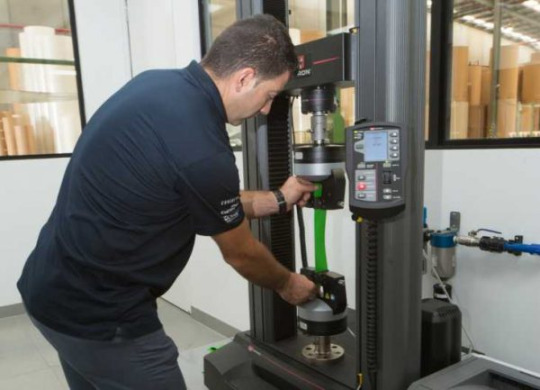
The second test that we’re going to look at is the “cracking and breaking strength” strength of each. The easiest example of this is a green tree branch that’s able to easily bend, sway and flew – while that same tree branch dried out will easily snap and break.
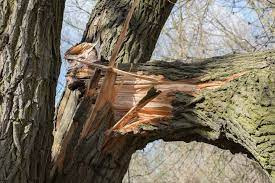
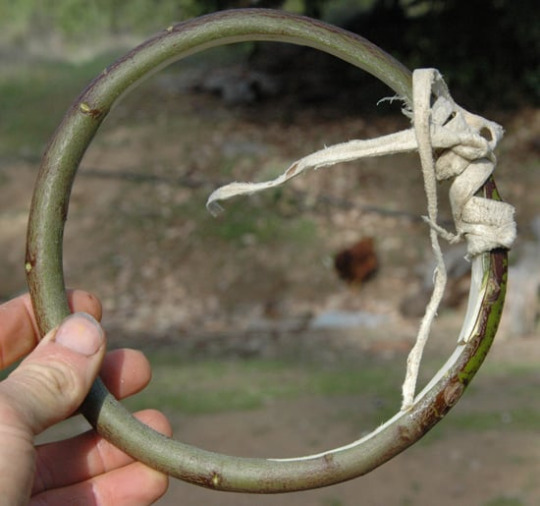
Again, this comparison is not between hemp plant but hemp fibre and steel (in this case, hemp fibre plastic). That would be like comparing the raw materials used to make steel (which are only rendered “useful” after a range of resource taxing processes, techniques and technology that’s been refined over thousands of years) which you could easily mistake for a pile of rocks… In this case, we give a massive point to hemp being extremely useful and versatile from the moment of harvest (and even before it’s harvested through phytoremediationthis).
When comparing the cracking and breaking strength, hemp requires twice as much pressure as required for steel. In addition, hemp fibres have a higher strength to weight ratio than steel, which in a construction scenario means lower overall weight and reduction of materials required.
Furthermore, growing hemp is a strategy for reducing atmospheric carbon. It also improves the soil texture and structure, which optimizes farming. In addition, hemp is less expensive to manufacture than steel.
In fact, the cultivation of hemp fibre crops has proven to restore mine soil! In 1941, Henry Ford unveiled the first hemp car. The dream was to create an automobile with fewer negative effects on the environment. More so, the hemp car could run on hemp fuel or vegetable oil. Only the tubular welded frame of the car was made of steel. The car’s body was estimated to be about ten times stronger than steel. However, Henry Ford was not one to live in speculations. So, he used an axe on the car’s panel.
Interestingly, the axe could not cut through the hemp material. This would not have been the case if used on a steel panel. Sadly, this invention never experienced mass-scale production.

The Modern Hemp Car
In 2017 Renew Sports Cars revealed their carbon-neutral car. Again, it is not surprising that hemp is key a component of the car. The sports car body was made from 100 pounds of cannabis, the result was a car lighter than fibreglass with high resistance to dents. The car was named Canna 225 was a lightweight beast. One time, the founder of Renew Sports Car, Bruce Dietzen, was on a Tv Show, Jay Leno’s Garage. As talks progressed about the incredible new car, leno took the car for a test drive which he loved. In addition, Dietzen and Leno hit the car with their fists remarking that “It’s also ten times stronger than steel”. Hemp did not fail to surprise the world as it absorbed the hits without a dent.
The Canna 225 Sports Car weighs about 2,500 pounds. It comes with 225 horsepower. Furthermore, a larger model, The Canna 525, weighs 2800 pounds with a 525 horsepower LS engine. It only gets better as these cars can also run on biofuel.


How Do Other Materials Stack Up To Hemp?
Throughout history, scientists have stumbled upon materials with incredibly high tensile strength. For example, in an experiment conducted by Thomas Edison in 1879, he heated bamboo splinters at a very high temperature. The result was carbon strands that could withstand incredible heat and conduct electricity.
In 1958, Roger Bacon created synthetic whiskers that were three-time stiffer than steel. In addition, they had a tensile strength that was stronger than steel. These fibres are now largely produced as carbon fibre. But, surprisingly, hemp fibres have greater tensile strength than even carbon fibre.
Graphene is another material with incredible tensile strength. Discovered in 2004, this form of carbon has a thickness equivalent to an atom. In addition, it is about 100 times stronger than steel. Further, graphene has a better conduction ability than copper. Just 1% of graphene mixed with plastics is enough to make the material a conductor. You must be wondering, how can hemp trump this super material? In 2014, scientists created supercapacitors by heating hemp stalk to high temperatures. The resulting supercapacitors rival the conducting strength of graphene.
Although graphene makes an incredible supercapacitor, it is extremely expensive to produce. Although hemp cannot do all the wonders of graphene material, it is a less expensive option for energy storage. Furthermore, the cost of farming, harvesting and manufacturing supercapacitors from hemp is very low compared to graphene.
The Industrial-Hemp Revolution
Due to the undeniable tensile strength of hemp, it’s no wonder seeing many mainstream industries and companies not only adopting hemp but seeing it as a key material moving forward.
Even military contractors and designers are getting in on the action by creating bullet-proof vests that incorporate hemp fibres that provide a lightweight and durable option.
This point causes a touch of internal conflict due to the military-industrial complex and the suffering in leaves in its path.
However, with the war on drugs drawing to an end (at least in respect to hemp) – I find it rather ironic how full circle this has come that there are potential soldiers on the front lines fighting in real wars who could be wearing hemp as part of their standard-issue uniform.
Find out more about industrial hemp through our 6 part YouTube series covering everything from farming, processing, products, building and more!
youtube
#Hemp#economy#ecofriendly#agriculture#industrial hemp#agribusiness#hempcommunity#farmland#australien#healthcare#hemp products#hemp news#business#margaret river#startups#companies#australian businesses#cars#unique#iron#entrepreneurs#finance#HempCo#Youtube
2 notes
·
View notes
Text
Breaking Down Hemp: The Flower
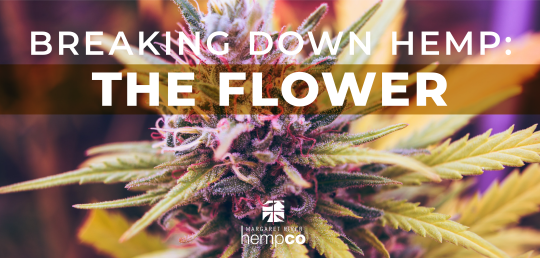
Often confused with the psychoactive variant of the Cannabis plant, hemp is not the same – and as such, has different uses. Despite looking and smelling alike, hemp flower produces different cannabinoid concentrations than what many know as ‘Marijuana’.
…So, what’s the difference?
Over time, people bred cannabis for different things. Sometimes, they would breed shorter, denser varieties to produce more seed per acre. Others, taller plants for more fiber. And as people started using it recreationally, they basically started breeding it for strength. As a result, we have the high-THC variation of cannabis Sativa known as ‘Marijuana’. But even more recently, people started utilising modern breeding practises to breed THC out of the plant.
Why? So the plant produces more CBD. CBD is medicine.
So now we have two classes of ‘cannabis Sativa’: Hemp and Marijuana. ‘Hemp’ is any plant grown for seed, fibre, or CBD hemp flower. ‘Marijuana’ is basically just a hemp flower that contains over 1% THC.
So now we’re past that, let’s take a deeper look at what hemp flower can be used for.
Where on the plant it is found
Hemp flowers are found on both the male and female hemp plants. However, on the female plant, they are elongated, spike-like clusters that produce seed when pollinated. On the male plants, the flowers are responsible for producing pollen, and form more clustered branches
The main flowers (also known as colas, tops, or heads) are found at the apex of the plant.
Does it contain THC?
Hemp flowers do contain THC. However, this concentration is low and contains high-CBD. THC, Tetrahydrocannabinol is the substance that produces the mind-altering effect of psychoactive strains of the cannabis plant.
Hemp must contain less than 1% THC in Australia. The law is set this way so that it is virtually impossible for users to experience the psychoactive effects no matter how much they consume. Research demonstrates that hemp contains more than 500 chemical compounds and though one of this is THC, its quantity is negligible.
So what can it be used for?
Hemp flowers are legal in most countries including the US, and the majority of EU countries. But in Australia, if you have a licence to grow Hemp, you are unable to use the flower or leaf. Flowers are very easy to grow and harvest, and can be done by hand or machine. The less mechanical processing, the more of the naturally occurring cannabinoids, terpenes, flavonoids, and other organic compounds remain intact in the plant – and that’s what you want for medicine.
Smoking hemp is the most used method of flower consumption, however, trends are moving towards more health conscious methods of consuming CBD. It has a relaxing effect without producing any “high”. It can come as pre-rolled CBD cigarettes. Smoking in itself is not a healthy habit, but CBD cigarettes seem to be helpful for people searching for alternatives to nicotine cigarettes and psychoactive breeds of cannabis.
Healthier options include using the flower in cooking or brewing as tea, although this method requires trial and dosing.
Hemp flowers will produce hemp seed if pollinated.
Hemp seeds are actually a type of fruit botanically. They belong to a group called an achene. They are formed from the pollinated hemp flowers, just as with any other type of true fruit. This means that a hemp farmer can choose from one of two paths each crop: seed or CBD (and that’s before even using the stalks, leafs, and roots!)
Hemp seed can be eaten whole, hulled /dehulled
Hemp seeds can be eaten with or without the shell. Whole means unhulled, that the seeds still have their shells. The ‘whole’ variants of hemp seed are crunchy, contain lots of fibre, and serve as a great source of minerals. They can be sprinkled on top of salads, yoghurt or sandwiches – and you can never have too much!
Hulled (dehulled) hemp seeds are hemp seeds with their shells removed. Also called hemp hearts and hemp nuts, they’re actually the only type of hemp seed available as food to us over here in Australia. Currently, it’s required that hemp seeds have their ‘hull’ (shell) removed in case they contain leftover cannabinoids from the plant they came from, though there are no cannabinoids in the seed itself, this only occurs if the seed has not been cleaned probably. Also, you may grow a plant in your back garden!!
Hemp seed can be ground up into different forms such as…
Flour
Hemp Flour is made from raw hemp seeds which are made up of about 30% oil. After the grinding process, the hemp oil is extracted. It is also known as hemp powder or bran. It is much cheaper than protein powder.
Protein
The production of hemp protein requires an abundance of healthy and ripe hemp seeds. Hemp seed oil is first extracted from the seeds by cold pressing and hemp cake is obtained as a by-product. The hemp cake is then sieved several times. If the cake is only “roughly” sown, it produces hemp flour, which is rich in dietary fibre, most of which is retained in the seed shells.
Further high granulation sieving removes larger particles of hemp seed shells which leaves much more protein-rich particles that are found inside the seeds (hemp hearts). Thus, hemp protein powder is obtained.
Nutritional benefits of hemp
Hemp as seed, flour, or protein is rich in gluten-free fibre which helps with digestion and can assist in the prevention of a number of health issues. Similarly, the seed oil is rich in heart-healthy oils including omega 3 and 6 fatty acids (the only plant source of this essential fatty acid).
Hemp Flower can be used for CBD oil if not pollinated
How is it turned into CBD oil
CBD is one of over 100 cannabinoids in the hemp plant. It accounts for 40% of any extract from the flower. There are different ways to extract it from the flower but the most popular and most accessible method is “Carrier oil solvent”.
It’s obviously a bit more complicated than this – and probably not legal to share the whole process. So, here’s the quick version.
After flowers are obtained, they are put into a container as small as a crockpot or as large as an industrial drum, along with a carrier oil – coconut oil, for example. The mixture is subjected to low heating. A perfect balance must be created between the temperature needed for extraction and not damaging the nutrients in the flower. The oil is stirred at regular intervals and “cooked” for nothing less than 3 hours.
The mixture is then strained, the new CBD oil is bottled and stored.
What are the benefits
Cannabidiol (CBD) is a popular natural remedy for a variety of mental and physical ailments From anxiety to PTSD, and pain management to epilepsy. It is used topically, orally, and even through suppositories in order to provide relief for a number of medical issues that at times, may not have been possible through traditional medicine.
So, why is CBD so effective? Because of the body’s endocannabinoid system.
CBD is also well known for its application in cancer management. It helps to reduce nausea and vomiting associated with cancer treatment. Research is also finding that it is neuroprotective and can be used in the treatment of epilepsy and multiple sclerosis.
And now we’ve been through that, let’s get back to the point.
Isn’t it incredible how many different things that just the flower of this simple plant can be used for?
Next week, we’re going to get to talking about the stalk.
#Hemp#flowers#agriculture#agribusiness#industrial hemp#economy#hempcommunity#ecofriendly#australian businesses#farming#farmlife#farmers#hempseedoil#hemp products#farmland#cannabis#cbd#hemp news#australien#farm living#healthcare#business#startups#companies#margaret river#HempCo
4 notes
·
View notes
Text
Is Hemp Wood the Future of Building?

Is Hemp Wood the Future of building?
Hemp has been legalized in the US, although with serious restrictions. This has resulted in increased production of the plant at an exponential rate. Hemp is a highly versatile plant that is being used for the production of sustainable by-products like plastic polymers, fabric, biofuel and now even wood.
Hemp fabrics have been used for clothing for millennia and it is one of the oldest fabrics used by humans. The plant can also be used in the production of a type of building material called hempcrete. Hemp wood is one of the latest products that this plant is being used to produce.
What is Hemp Wood
Simply? An innovative answer to the question of finding the material for building more sustainably. It’s late addition to the list of building materials is because of the decade’s hemp has spent as an illegal drug. This illegality due to its relationship with marijuana got in the way of its potential being identified.
Hemp wood has undergone numerous studies and tests thanks to the effort of Greg Wilson and the Fibonacci Company. This investment into hemp has generated a perfected hardwood derived from our favourite plant and poised to replace plywood.
Hemp is very versatile and can be cultivated in different climates. It is the optimal material for people to use as a substitute to tree-based timber since it is cheap, easy to grow and produces large yields.
What is it made from
Hemp wood was derived from hemp by using the algorithm of an oak tree. The hemp wood team reverse-engineered hemp’s growth cycle to imitate the stability and sturdiness of this popular material. They applied the knowledge from bamboo flooring to invent a wood that is similar – but stronger.
Hemp wood, just like its parent plant, contains a THC content of 0.3 per cent or less. The creation process involves the compression of hemp pulp fibres. This process is known as biomimicry. This is followed up by strengthening using a soy-based glue.
Hemp wood is 20% stronger and 100 times faster growing than oak. Hemp is very similar to strand-woven bamboo aside from it being a lot less coarse. However, bamboo is more likely to chip due to its roughness. It is also not as woody has hemp, giving hemp the advantage.
Current manufacturers of hemp wood
Fibonacci LLC launched its $5.8 million Hemp wood manufacturing facility in Murray, Kentucky. This facility measures about 15,000-square-foot. According to Greg Wilson, their founder and CEO, it is to be their first step in the plan to manufacture up to a million board feet of four-quarter lumber yearly,
Wilson and his team have patented the method with which they employed. Hemp wood can be purchased at www.hempwood.com. Fibonacci LLC has plans to build eight more facilities across the US and predict the next one will be up and running by 2021.
The cost of hemp wood is greater than regular wood right now. However, it soon will reach economies of scale and compete with wood. The company expects that by 2021, their prices will give Oak a run for its money. With the many obstacles and challenges that face the introduction of new material, this is a favourable outlook.
Hemp wood uses
Fibonacci intends to manufacture wood tabletops and flooring for purchase. Currently, they are not making structural or exterior products but they insist that it is strong enough. At the moment, they are focusing on interior face grade. Hemp wood flooring is supposed to be available within the year. So, what could it be used for as we move into the golden age of hemp?
Framework for houses
When it comes to building sustainable houses, a great concern is the selection of a material which is durable and healthy. It also helps that this material is sustainable, eco-friendly and locally sourced. Hemp wood will be first available in boards and blocks. and in the near future, could be used for constructing frameworks for homes.
Use in woodwork
As mentioned above, interior uses for hemp wood are already in the initial stages. Hemp wood can be used in the creation of sturdy, beautiful furniture, doors, beams etc. It is a non-toxic wood due to its organic roots and soy-derived glue. It is a healthier choice for interior building.
Hemp Wood is an innovative product which can open the path to homes which are safer for us and the environment. It is created through a genius process using the pulp fibres of the plant. Durable, strong and eco-friendly – doesn’t this sound like an excellent option to you?
#Hemp#hempcommunity#economy#ecofriendly#agriculture#industrial hemp#agribusiness#farmland#australien#healthcare#hemp products#hemp news#farm living#business#margaret river#startups#companies#australian businesses#Hemp Wood#Wood#house building#Natural Home#HempCo
3 notes
·
View notes
Text
Hemp Seed Oil Vs. Fish Oil | #1 Reason To Switch For Better Health
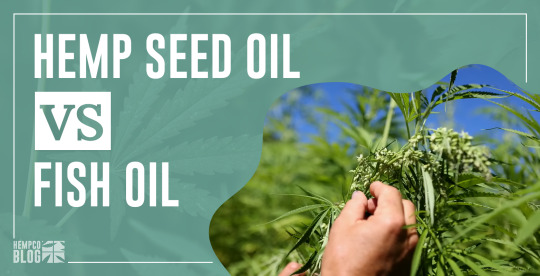
Many people ask why Hemp Seed Oil and Fish Oil are such a big deal in nutrition.
Omega-fatty acids are some of the most important components of the human diet, so it’s no surprise that we’ve turned to supplements that can fit our needs.
Omega fatty acids are considered essential nutrients because the body needs them to maintain proper functionality - we simply can’t operate without them. Because our body does not produce them on its own, we need an external source to provide them - in this case, our diet.
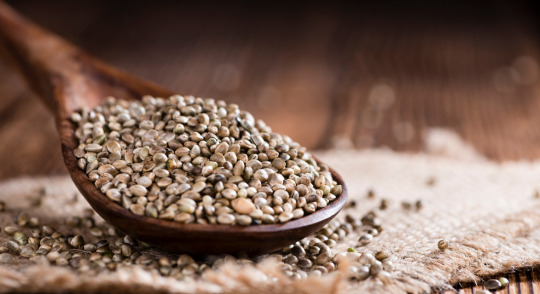
Eating seafood is an easy way to fulfil the body’s need for omega fatty acids, although it’s not quite for everyone. But now there’s a new way to meet your RDI of essential fatty acids - Hemp Seed Oil. Hemp Seed Oil is also high in Omega-3 fatty acids and is made by extracting it from a specific source, much like fish oil. It can then be put into capsules and distributed to consumers.
However, Hemp Seed Oil is the new kid on the block. Rumour has it, Hemp might just be the alpha and omega when it comes to essential fatty acids.
People are always looking for the next best supplement to maintain their best health. Fish oil is a rich source of Omega-3 Fatty Acids, but Hemp Seed Oil is also jam-packed with them. This week we’re taking a look at whether Hemp Seed Oil could be the next fish oil.
Why Essential Fatty Acids?
For decades now, scientists have maintained the idea that consuming omega fatty acids can help support the health of your heart, brain, and overall development.
The heart is the engine of the body. It is always pumping blood for circulation. Due to its continuous action, it requires nutrients like omega fatty acids to run. In turn, it’s believed that Omega fatty acids can reduce incidences of sudden heart attack and cardiac shutdown.
Essential Fatty Acids are speculated to also help keep certain auto-immune diseases at bay. For example, rheumatoid arthritis comes with unpleasant symptoms like morning stiffness, joint pain, and swelling in patients. You can manage these symptoms with a natural product-omega fatty acid. Thanks to omega fatty acids, individuals living with rheumatoid arthritis can have a better life and function maximally.
Additionally, research shows that pregnant women should consume a variety of omega fatty acid foods. The simple reason is that fatty acids are crucial in the proper development of the fetus.
Fish Oil And Human Health
The main reason that Fish oil is good for human health is that it contains an abundance of omega 3-fatty acids. Pure fish oil has been in high demand since scientists figured out a way to isolate and contain fish oil directly from marine life.
There are two types of omega 3-fatty acids in fish oil - EPA (eicosapentaenoic acid) and DHA (docosahexaenoic acid). Other nutrients include Vitamins A, D, and selenium.
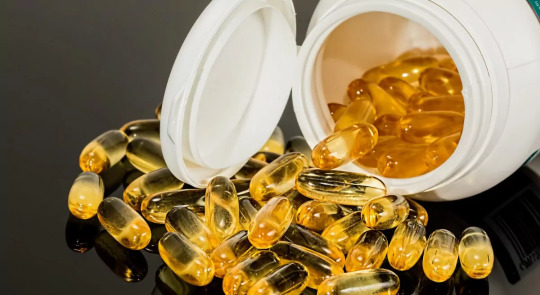
Fish oil helps to reduce the risk of many conditions, like lowering the levels of triglyceride in the body. It also has anti-inflammatory properties and may benefit individuals with renal disease. On top of that, it can promote skin cell regeneration and protect from UV rays.
The ‘Wet rendering’ process is the most common method for extracting fish oil. It involves heating the fish to release the oil. After sitting it in boiling water, you have to remove the water and press the fish. The product undergoes separation, centrifugation, and concentration to yield a nutritious oil.
However, when producing fish oil, the balance of the natural ecosystem is disturbed. Overfishing can cause a break in the food chain. Smaller fish are most commonly farmed for fish oil, which means less food for bigger fishes like sharks and guillemots which feed on smaller fishes. The long-term outcome of overfishing is a less diverse, simpler marine ecosystem.
Is that something we really want to be added to our legacy?
Hemp Seed Oil And Human Health
As the name suggests, Hemp Seed Oil is oil obtained from Hemp Seeds. Processed Hemp seed oil is colourless and clear, whereas unrefined Hemp Seed Oil is green in colour with a distinct nutty flavour. There is a wide application for Hemp Seed Oil such as making shampoo, soap, paint, ink, and so much more.
Although Hemp Seed Oil is just gaining popularity, it has become highly sought after. Those on plant-based diets often opt for Hemp Seed Oil because it is packed with over 30% protein and loads of other nutrients. In addition, they contain all the essential amino acids that the body needs but cannot make. Hemp Seed Oil is also very rich in omega fatty acids. Furthermore, it has excellent anti-inflammatory properties.
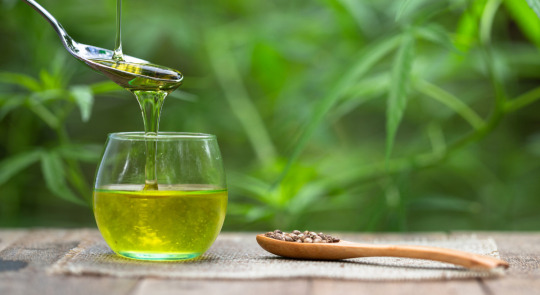
Making Hemp Seed Oil begins with selecting the strain of hemp plant that contains very little THC (tetrahydrocannabinol). Harvesting and cleaning the hemp seed is the next step. After cleansing the seeds, they are pressed to produce the oil.
The Nutritional content of Hemp Seed makes it a very useful supplement for maintaining health. Hemp Seed Oil is rich in polyunsaturated fat, monounsaturated fat, protein, magnesium, fibre, thiamine, zinc, and calories.
Check out the linked blog if you want to learn more about the Health Benefits of Hemp seed Oil
Hemp Seed Oil Vs. Fish Oil
We have established that hemp seed oil and fish oil contain many omega fatty acids. Omega fatty acid is highly beneficial, but the body cannot produce it. The extraction of fish oil involves high temperatures and solvents that may alter the “naturality” of the oil, and it also harms the ecosystem.
The process of manufacturing Hemp seed oil preserves the purity of the oil while retaining its benefits, and it doesn’t harm the environment. In addition, Hemp Seed Oil has a longer shelf life than fish oil.
Hemp is a plant that you can grow on a small scale or large scale. Farming Hemp seed does not have any hazardous effect on the environment. However, harvesting fish for their oil is a straight path to a reduction in aquatic life.
Aquatic animals are already heavily depleted of food, and taking the forager fish out of the ecosystem is going to make this all the worse.
Fish oils have about seven times more omega 3 than omega 6. In short, fish oil depends solely on the omega fatty acids for their importance. However, hemp seed oil has omega-3, omega-6, and omega-9 fatty acids paired with several other essential nutrients.
The amount of omega 3 in Hemp Seed Oil is a little less, but it actually contains the optimal ratio of Omega-3 to Omega-6 for human consumption. This makes it an ideal choice for consumption!
Final Words
Both oils are great sources of supplements, especially omega fatty acids. However, it is left to you to determine which you want. Fish oil is ideal for those who only need Omega-3 in particular. On the other hand, Hemp Seed Oil has omega-3, omega-6, and omega-9 in the perfect ratios, alongside a wide range of other essential minerals and nutrients.
We opt for Hemp Seed Oil because it contains the perfect amount of essential fatty acids and also offers a diverse selection of important nutrients. On top of that, Hemp Seed Oil is a plant-based alternative that doesn’t involve the farming of animals. It can be grown in a few months, and ready to consume within days.
Instead of Fish Oil, consider trying our Hemp Seed Oil capsules. We stock two types; one with Pure Hemp Seed Oil, and another with Hemp Seed Oil and Turmeric.
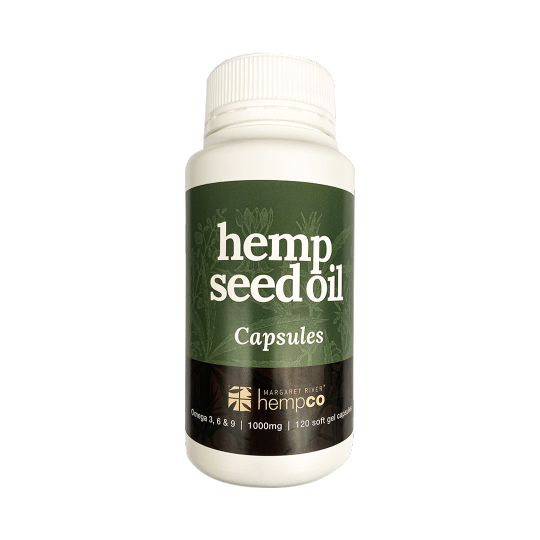
View Product

View Product
#Hemp#hempcommunity#ecofriendly#industrial hemp#australien#hempseedoil#margaret river#healthcare#hemp products#cbd#hemp news#hemp oil#essential oils#oil and gas#midnight oil#hemp protein#natural products#made in australia#fish oil#skin care products#HempCo
4 notes
·
View notes
Text
Growing, Processing, and Building with Hempcrete

"Hempcrete is the eco-friendly building material of the future"
If you’ve been following for a while, you’ve probably heard or read something along the lines of the preceding statement. And maybe those who haven’t still have questions. That’s okay! We’re here to help answer them.
Hemp has been overlooked as a solution for practices that cause significant damage to the environment from industries ranging from clothing to construction. But nowadays, the number of problems that it offers to solve is becoming too great to ignore. The idea of building houses with a plant may seem a little far-fetched, but today we’re going to dive into why it’s such a viable idea.
Growing Hemp for Hurd
What is Hemp Hurd?
Hemp Shives, Hemp Hurd, is also derived from the Hemp stalk’s inner woody mass that surfaces once the bast fibre is removed. But wait, doesn’t that make hurd a by-product? Well, even though that is technically true, this low-value agricultural by-product has a lot of practical applications. From being useful in the construction industry to being envisioned as the successor of wood pulp in the paper industry, hemp hurd might just be the next multi-million dollar industry on its own.
You can learn more about Hemp Hurd here!
How To Grow Hemp for Hurd?
First thing’s first, you need to be sure that you choose seeds that have been purpose-bred to increase your crop yield. You also need to make sure that whatever you plant is in compliance with your area’s THC policy or you might just end up losing the entire crop and possibly even face criminal charges. Another consideration would be deciding whether you would prefer planting a seed or a clone.
What’s the difference? First of all, seeds do not necessarily always turn out to be of the same phenotype or quality as their parents. There could be, possibly, more than five different phenotypes resulting from 10 seeds of practically the same variety.
Planting a clone could save you time and money (in the long run) because you’re working with known and stable genetics and so you’re eliminating most of the risk there and then. Make smart and efficient choices.
The next thing to keep in mind is the climate and soil atmosphere of your plant. Hemp grows in a warm environment and a mildly humid soil atmosphere that receives enough rainfall/irrigation to keep its seeds moist.
Harvesting and Processing
Hemp, as a plant, exhibits pretty speedy growth. The crop is usually ready for harvest in 3-4 months after plantation. However, the time may vary if you are growing hemp with a specific harvest in mind. Harvesting timeframes for Hemp Hurd is generally around the same time as hemp fibre, before the last pollen is shed.
The step that follows harvesting hemp is retting, which happens in one of two ways. You either let the dew work its magic, or you flood the field and let your Hemp soak in it for a few days before allowing it to dry. Different microbial actions will separate the enzymes that bind the fibres to the inner woody stalk, enabling you to separate the stem’s hemp bast.
The separation marks the end of the retting process. Once retting is complete, the stalks are dried and crushed in a decorticator. A decorticator is an industrial machine that separates the fibres from the dried stalks and collects hurd separately.
And there you have it! The woody shives are now ready to be stocked up in bales or used..
Mixing and Building
Turning Hemp into hempcrete is a series of steps that requires great precision and attention to detail. Here’s what you need to keep in mind:
Binding Agents
Lime based binders (50% lime, 50% metakaolin) can be used to make Hempcrete, mainly because they absorb water and chemically cure the mixture as it is made. A basic Hempcrete recipe is 4:1:1! 4 parts industrial Hemp Hurd, 1 part lime binder and 1 part water.
However, people also use clay and other unfired binders instead of lime ones, personally vouching for the potential cost savings and other benefits of using them.
Mixing
Hempcrete can be made either by using just your hands or a mortar mixer and usually no other sophisticated equipment is required to do the job.
Almost everyone has a different sequence of adding ingredients. However, the science suggests that dumping the water into the hempcrete mix is the most effective way of adding it. Some people prefer misting the water, but this has shown to be less effective.
The whole process should take around 10 mins. You’ll know that the mix is ready when it is dry enough to retain its shape when packed into a ball yet moist sufficient to crumble when force is added.
Remember, too much water will impact the drying time once it is made into a wall or concrete structure. Once properly mixed and set (usually takes 20-30 mins), your Hempcrete will be ready to use.
Making the Wall out of Hemp
Monolithic Cast Walls
This is one of the most commonly used methods of making Hempcrete walls. Also known as the standard-slip form, this method requires that you “cast” Hempcrete in either wooden or plastic structures and tamp around the edges to secure it in its place. This is somewhat similar to pouring concrete while making a traditional wall. However, we use the term “casting” instead of running when referring to Hempcrete.
The hempcrete will need some time to set, usually a day or two before you can remove the forms and use them for other walls.
Once completed, allow 6-9 weeks (depending on the climate) for your Hempcrete to dry up to 15% moisture content and take its final form.
Hempcrete Blocks
Hempcrete blocks are ready-to-use, non-structural, construction blocks that are lightweight, recyclable and pretty sturdy.
They save you the drying time needed for monolithic walls as they are batch-dried at the production facility; however, bear in mind that they are only used for wall-filling or insulation purposes.
This is because they lack the cohesiveness of monolithic walls, which have no spaces in between and are cast all at once to achieve a seamless consistency.
Spray-on Hempcrete
This spraying hempcrete method involves the use of an industrial spray for wall-making. Yes!
You can simply add hempcrete in a cement mixer and let an industrial sprayer build the hempcrete wall from interior formwork instead of manually adding it layer by layer into the form and working your way to the top.
The main drawback is that this method employs expensive equipment and requires far more practical knowledge of Hempcrete and Hempcrete construction than the traditional method.
Benefits of Building with Hempcrete
Hempcrete can replace conventional construction materials and provide sustainable and environmentally friendly means of fulfilling our housing needs. Hempcrete greatly reduces the need for using toxic building materials and saves you a ton of money during construction.
Here are ten reasons why you should prefer to build with Hempcrete:
Non-Toxic
Affordable
Durable
High Structural Integrity
Insulator
Co2 Absorbent
Moisture Regulator
Mould and Pest Resistant
Recyclable
Fireproof
Hempcrete absorbs Co2 and other irritants in the air while naturally adjusting the room’s humidity and temperature. This breathable material not only gives you a natural, healthy environment but also drastically reduces your heating/cooling costs.
Being diffusive and moisture-absorbent means that Hemp walls are less likely to be infected with moulds, which also directly equates to lesser allergies, chronic respiratory diseases and asthmatic attacks associated with moulds and their airborne spores.
Our planet’s health takes a toll every time we use cement, wood or toxic chemicals for construction purposes. Thus, the sooner we can incorporate Hempcrete in the construction industry, the bigger part we can play in preserving the environment.
#Hemp#hempcommunity#cannabis#farming#economy#ecofriendly#agriculture#industrial hemp#farmlife#farmers#agribusiness#farmland#australien#hempseedoil#healthcare#hemp products#cbd#hemp news#farm living#business#margaret river#startups#companies#australian businesses#HempCo
3 notes
·
View notes
Text
Refined Vs. Unrefined: Hemp Seed Oil

Out of all the resources that hemp can be broken down into, the seed has to be one of the most diverse in application.
Not only can hemp seed be consumed, but it can also be pressed to yield a nutrient-rich extraction that can be best described as nature's most perfectly blended oil.
However, it can also be taken one more step that people are often unaware of: refinement.
This week, we're going to be looking at the differences between the two types of hemp seed oil and what they can be used for.
Unrefined Hemp Seed Oil
DID YOU KNOW? Unrefined hemp seed oil contains the compound gamma-linoleic acid that helps in the formation of hormones in the body.
Much like the name suggests, unrefined hemp seed oil has not undergone the refinement process. It is raw, and obtained by a process of cold pressing hemp seeds. Cold pressing is a process in which a hydraulic press is used to extract liquid from fruits, seeds, and vegetables without the use of heat).
By not using heat during the extraction process, thermolabile constituents like vitamins and physical properties like the color and odor are not affected. The vitamins, nutrients, minerals, and fats are what make hemp seed oil so good for our skin and bodies.
The chemical compounds in the oil that are so healthy for us are as follows;
Essential fatty acids that cannot be produced by the body such gamma-linolenic acid which is an omega 6 fatty acid, and alpha-linolenic acid which is an omega 3 fatty acids present in a ratio of 3:1
Polyunsaturated fatty acids e.g. oleic acid and stearidonic acid
Vitamins: it contains Vitamin A, B, and E
Antioxidants and
Minerals such as calcium, magnesium, potassium, etc.
All of this nutritional goodness is exactly what makes pure, unrefined hemp seed oil so good for our bodies. Whether you want to eat it, drink it, or lather it on your skin, you're going to see all the benefits first hand.
If you're consuming it internally, it's recommended at the dose of 1-2 tablespoon fulls per day. It can and can be incorporated in the form of a smoothie, soup or in a salad (when the taste is agreeable).
Hemp seed oil also makes an incredible skincare product. The presence of antioxidants, it is essential in slowing the rate of aging, and giving rise to glowing, radiant skin... But you can read more about that here!
The unrefined hemp seed oil has a pleasant odor, dark green color, and a nutty taste. It is has a shelf life of 3-6 months once opened, and 12 months bottles. Rancidity can be observed when it is near or has passed the expiration date. This is as a result of oxidation of the fatty acid present in the oil.
DID YOU KNOW? Unrefined hemp seed oil helps to reduce the blood cholesterol level and is perfect for use by people suffering from diabetes.
Refined Hemp Seed Oil
DID YOU KNOW? The refined seed oil is perfect for dry skin because of its moisturizing and emollient properties.
Oils have many uses outside of consumables and cosmetics, as we know. The problem with hemp seed oil is that it just contains too much healthy stuff to be viable for commercial uses. That is, until it's refined.
To remove the nutritional properties of unrefined hemp seed oil, the oil extracted via cold-pressing undergoes a refining process. The quality of this process depends on factors like;
How much of the active constituents are removed
The noticeable changes in physical properties like color
The processes involve heating the cold pressed oil, which causes almost everything healthy in the unrefined oil to be destroyed. The major processes that are employed are:
Distillation: a distillation apparatus is employed separates the matrix and the color based on their melting point, a high temperature ( ≥ 2700C) is employed which results in loss of thermolabile constituents e.g. vitamins.
Decolorization: freshly extracted oil undergoes processes to remove the dark green color using absorbents like CarbonX. CarbonX has the advantage of reducing the removal of active constituents.
Winterization: winterization removes the wax and triglycerides that can lead to greasiness. it involves mixing the oil with an ethanolic solution, heating to remove the solvent, and then freezing. Upon cooling, wax and other triglycerides separate out and can be collected through methods such as decantation.
After being refined, the hemp seed oil has a light green transparent appearance, with no odor or taste.
Refined hemp seed oil still contains major constituents found in the unrefined counterpart, however, due to a high amount of heat employed while refining, thermolabile compounds like vitamins are destroyed.
While many constituents were removed through refinement, is now a great, sustainable raw material for products such as commercial paints, oils, varnishes, and lubricants. This is due to...
lack of odor.
Longer shelf life
Less cost.
Less greasy due to the absence of wax, which has been removed using winterization.
The refined oil is employed to manufacture other products such as;
Plastics: Plastic manufactured using hemp seed oil are eco-friendly; they are not pollutants during or after use because they are biodegradable. You can read more about hemp bio-plastics on our other blog post here!
Bio-fuels: The refined hemp seed oil can be further refined to produce fuels such as ethanol which is an additive to gasoline and is used as fuel for some aircraft. You can read more about hemp bio-fuels here!
Conclusion
So now you know.
There's a lot, isn't there? And we didn't even get into all the different uses for the physical hemp seed itself yet - this is just the oil!
Are you beginning to see why we truly believe that hemp is the most diversely applicable plant on earth?
We'd love to hear any uses for hemp seed oil that we missed. If you can think of any, drop a comment below!

View Product
#Hemp#hempcommunity#ecofriendly#industrial hemp#australien#hempseedoil#margaret river#healthcare#hemp products#cbd#hemp news#hemp oil#essential oils#oil and gas#midnight oil#hemp protein#natural products#made in australia#HempCo
2 notes
·
View notes
Text
Starting a Hemp Farm in Australia

Farming Industrial Hemp in Australia is a relatively new concept to a large number of people, and that’s okay - That means progress! If you're just looking at starting a Hemp Farm in Australia, skip past this introduction and get right to the juicy stuff! First, we’re going to clear up a few common misconceptions that we have noticed when it comes to farming this incredible crop in our country.
Due to the presence of the psychoactive compound THC, cannabis species’ received quite a bad reputation. This led to the criminalisation of the entire family. However, recent revelations have exposed a massive industrial potential for Hemp, and Australia has been looking to get back on board!
With the confusion that already surrounds THC and CBD, an industrial layer complicates things. It’s not surprising so many people think Hemp can’t be grown in Australia!
...But it can. And this week we want to show you everything it takes to become a Hemp Farmer in Australia - state by state.
Let’s get started!
Ideal Growing Conditions for a Hemp Farm in Australia
What conditions does Hemp grow best in?
Hemp grows best in tropical and subtropical climates that get at least 600mm of rainfall every year with quite a bit of humidity. Due to this, it’s generally grown through summer-autumn. However, Hemp has been known to adapt to almost any environment.
A wide range of climates have ‘landraces’ that essentially adapted to the environment - a massive testament to this plant’s versatility. A great example of this is the cannabis Ruderalis species native to Russian territory where the land is frozen over for around 8-9 months of the year. In response, this particular variant adapted to a three-month seed-to-flower lifecycle. The plant drops seeds into the ground once matured, which freeze under the ice - ready for germination by next summer’s first melt.
Cool, huh?
What states in Australia have the best conditions for Hemp?
Tasmania grows the most Hemp in Australia, partly due to the cooler subtropical climates that would be optimal for Hemp growth. Other states like VIC, SA, NSW, WA, and QLD can also meet these criteria. Essentially, the further north you go, it could be tougher to grow Hemp due to the intense and dryness that starts to present through summer. When looking into genetics that could grow well in these conditions, it could be worth looking towards genes sourced from dry, hot locations like Africa. These variations could offer more drought-resistant traits than a landrace from Jamaica or Asia, for example.
There has recently been progress in the field of Hemp genetics for Australia’s hotter environments. Professor David McNeil is from the UTAS and Department of Primary Industries and regional development is working to develop seed strains better suited to warmer and drier conditions in Australia's north (North Queensland, Northern Territory)
How To Apply for an Australian Hemp Farming Licence
Starting a Hemp Farm In Australia: Queensland
There are three different types of Hemp licences you can go for in Queensland. The three categories are ‘Grower’, ‘Researcher’, and ‘Seed handler’. Here, we will focus on the ‘Growers Licence’. However, If you are a holder of any of these licences, you are required to keep records of your activities such as any industrial cannabis in your possession and how much you plant. You are also prohibited from engaging in or supplying anybody with material that relates to any activities surrounding the production of a CBD oil or product from the leaf or flowering heads. You can read about the different types of Hemp products here!
The Requirements for a Hemp Growers Licence in Queensland are quite simple. To be eligible, you must not have been declared bankrupt or convicted of a serious offence within the previous ten years. Of course, you should probably also own a reasonable amount of land unless you’re just doing it out of interest. It should also have access to irrigation in case rainfall doesn’t quite do it.
Starting a Hemp Farm In Australia: New South Wales
New South Wales allows the growth of low-THC Hemp if specific conditions are met by the applicant(s). Once approved, you will be allowed to carry out activities related to the production of Hemp for commercial purposes, manufacturing processes, scientific research, or any other purpose outlined in the regulation. Next we’ll outline some of the more significant ones application requirements for New South Wales Hemp licences;
Submit an application with the relevant form
Describe the purpose of the licence
Define the intended use and final destination of the low-THC Hemp being grown
Give details of any drug-related offence of you or any close associate
Provide a description and a plan for the land on which the Hemp will be grown
Provide Identification and any other required documentation (may vary based on the intended purpose of the crop)
Unfortunately at this stage there are no Hemp processing facilities operating in New South Wales. However, there will be a fibre processing facility that is estimated to be opening up sometime between now and the end of 2022 headed by Langdon Brown
Starting a Hemp Farm In Australia: South Australia
South Australian's are able to apply for three different types of Hemp licences: A Posession licence, a cultivation licence, or a processing licence. Certified Hemp Seed must come from a plant that didn’t have leaf or flower that tested above 0.5% THC. Independent tests must be undertaken for every crop, and if a plant tests above 1% THC, a criminal investigation may be opened.
For those in South Australia who hope to process their Hemp, there are options! Out of the two processing licences granted back in 2018, the most notable was Mick Anderson who set out to open a Hemp Seed processing facility in Borderdown under the licence that was granted.
Starting a Hemp Farm In Australia: Victoria
If you live in Victoria and want to farm Hemp, you must apply for a licence within your state as all others do. Like every other state, this licence is for industrial breeds (non-therapeutic purposes). The seed used to sow the crop must have come from plants that tested to less than 0.35% THC. Furthermore, leaf, flower, or any other part of the low-THC hemp must not be sold for human consumption.
To apply for this licence, you and all other applicants must provide a national police background check, credit report, business or research plan. You must also provide information about the area in which you plan to grow your Hemp. An assessment of the farm is also often required.
As for Victoria, Australia Primary Hemp owns and operates one of the most prominent Hemp processing facilities in the country. You can get in touch with them here to learn more about their services!
Starting A Hemp Farm In Australia: Tasmania
Tasmania's Industrial Hemp licencing is run by the Department of Primary Industries, Parks, Water, and Environment. As with any other state, Tasmania requires a licence to cultivate low-THC Hemp varieties for any purpose whatsoever. However, they have a range of licences available to choose from. Tasmania allows the provision of licences for supply, cultivation, manufacturing, research purposes, or any mix of the aforementioned purposes. The DPIPWE will also require that you submit police background checks for you and all partners, as well as information regarding the site that you wish to grow your Hemp crop on.
Processing your Hemp in Tasmania can be done thanks to people like Tim Crow from Hemp Harvests who opened up a Hemp processing facility in Tasmania that can process up to 3,000 tonnes of Hemp Seed every year!
Starting A Hemp Farm In Australia: Western Australia
Western Australia will also accept applications for prospective Hemp farmers who are hoping to get their foot in the door for participation in the newest crop industry in Australia. The state maintains that the leaf, flower, or any other part of the plant must not contain any more than 1% THC or it will be classified as ‘Marijuana’. To be eligible for this licence, you’re required to be over 18 years of age, be considered a ‘fit and proper person of good character and repute’, hold required qualifications, and have enough resources to carry out your proposed plan.
Hemp processing in Western Australia is about to get a whole lot easier with our brand new processing facility that just opened up! If you’re in Western Australia and looking for Hemp processing services, please get in touch through our website or www.hemphomesaustralia.com.au
Choosing the right Hemp Genetics
One of the most crucial decisions to make when starting your Hemp farm is choosing the right Hemp genetics based on your environment. The last thing you want is to get half way through your grow, and it gets destroyed by environmental factors that caused easily avoidable problems. Things like pests, mould, frost, and drought can be detrimental to your crop. Is your area prone to any of these?
Presumably, everywhere in the world has at least one ‘downfall’ when growing crops. Luckily we have honed in on genetic selection and been able to beed environmental-resistant strains of Hemp - well, not totally.
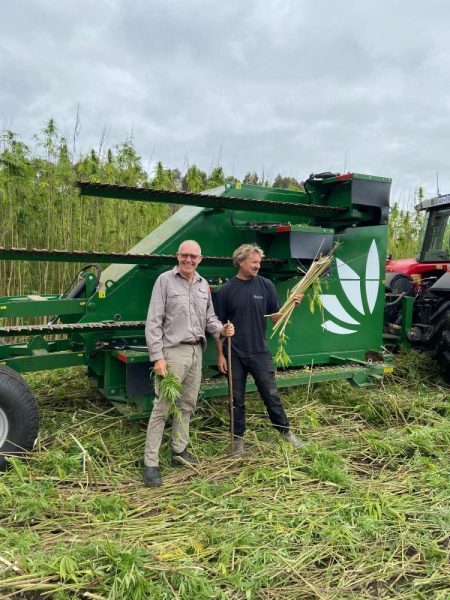
Generally you can pick from a couple of desirable traits that have been brought together into a viable crop breed.
Do you live in a hot, humid, muggy environment? You’re going to want mould resistance. Do you live in an area that has cold-snaps which can hurt crops that prefer moderate-higher temperatures? You’ll want frost resistance. And so on, so forth.
You can also choose genetics that yield more of specific resources. Say you want to farm for seed and want to achieve the highest possible yield per acre… you’re not going to want a fibre variety.
You’re going to want genetics that have been selected and bred over years to maximise the production of seed - without genetically altering the plant.
If you want fibre, you’ll want a different variety entirely. The same goes for flower. Multi-purpose variants are also available, and we have no doubt genetic research will continue to provide strong options for Hemp farming as we move into the future.
It’s always best to consult the experts when it comes to selecting genetics! please contact us, if you need further info or have any questions.
Wrap Up
We wanted to take a deeper dive into the state by state options for those who are hoping to participate in the Australian Industrial Hemp industry to show that it certainly is possible! And it’s not the most unrealistic goal if it’s something you truly want to do. Every state in Australia has open applications for Hemp farming, processing, and researching licences that you could get started on tomorrow. No, you won’t be able to produce THC or CBD. Yes, you will have to comply with strict testing standards. But if you’re not breaking the rules, what’s the matter with that?
Everyone here wants the Hemp industry to continue to grow in Australia, and one of the key aspects of this industry is bound to be the exact same for Australia as in any other sector - export heavy. The real economic potential will start to shine once we’re able to supply high quality, Australian Hemp products to the world.
So, what are you waiting for? Let’s get started!
#Hemp#hempcommunity#cannabis#farming#economy#ecofriendly#agriculture#industrial hemp#farmlife#farmers#agribusiness#farmland#australien#hempseedoil#healthcare#hemp products#cbd#hemp news#farm living#business#margaret river#HempCo
3 notes
·
View notes
Text
Industrial Hemp- An Environmental & Economic Powerhouse
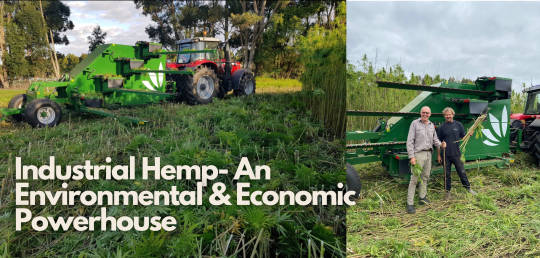
There are very few agricultural products that have made a significant increase in productivity of up to 455% since 2018. One at the top of this list is industrial hemp which has recorded massive gains since it became legal across the country.
Researchers predict the hemp industry will continue to grow as more states continue to benefit from its use, creating more job opportunities for hemp farmers and the industry’s overall growth.
A driving force behind the growth in the Australian Industrial Hemp industry is the AIHA (Australian Industrial Hemp Alliance), a not-for-profit Association. The purpose of the Alliance is to represent businesses and organisations involved in industrial hemp and associated products at a national level, in order to develop and grow the Australian industry.
Head over to their website for some great resources on the industry.

What Is Industrial Hemp?
Industrial hemp is a plant that belongs to the Cannabis sativa species, known for its use in the provision of industrial and consumer products. Hemp is cultivated in over 30 countries and is an essential source of raw material for many primary industries including food, agriculture & construction.
Hemp Vs. Marijuana
Many people tend to confuse industrial hemp and “marijuana” based on their visual similarities (and years of conditioning from propaganda campaigns). By distinction, industrial hemp contains more fibre and is very low in active tetrahydrocannabinol, known as THC, the psychoactive compound in marijuana and other cannabis varieties.
Marijuana, on the other hand, contains up to 15% to 40% of tetrahydrocannabinol, which makes it a highly intoxicating substance. Industrial hemp also has a higher percentage of CBD, making it a better alternative for industrial uses than marijuana.
Hemp plants grow typically in close proximity to each other- as little as 4 inches apart, whereas marijuana plants require up to six feet from each other for proper growth. The growth rate of these two also differs, considering marijuana takes about 60 to 90 days to grow, while hemp requires up to 108 to 120 days to grow.
Economic Benefits Of Industrial Hemp
Industrial hemp provides the sustainability and durability that make it stands out from its competitors. Almost every part of the hemp- its fibres, oils, leaves, and seeds provide its own economic benefits to man, some of which include the following:
Clothing and textile – industrial hemp is more cost-efficient and approximately 10 times more efficient than cotton. In addition, cotton growth will require the use of pesticides, which also has its side effects on the environment. Other benefits of hemp fibres include the production of nets, carpets, industrial textiles, shoes, etc.
Construction– hemp-based material makes a better alternative to wood as it is lighter, stronger, and more durable.
Protein and food supplement– Hemp oil is rich in protein and has high essential fatty acid content with very low saturated fats compared to soy products. Hemp oil can be used to make a variety of food and products. It is also less expensive to extract its protein than soybeans.
Low-cost fuel– non-renewable energy sources can be substituted with renewable sources like hemp that could be beneficial to man both environmentally and economically.
Larger profits for the hemp industry in the coming years- The US CBD market grew to $202 million in 2017 and is projected to become a billion-dollar market in the future. CBD is known for its therapeutic and health benefits for humans and animals. Hemp plants have fast growth and regenerative biology, which makes them effective in keeping up with the ever-increasing demand in the industry. We can’t wait to see it’s potential unlocked in Australia
Great productivity/opportunity for small farmers- hemp can be cultivated in most states (more details here), and the dense nature of its growth makes farmers produce more hemp per acre of farmland. It also saves the cost of production for farmers as there is little or no space for weed growth, reducing the effort and resources to get rid of weeds. In addition, hemp farming is an excellent alternative for farmers who want to move away from tobacco farming, especially in states that depend more on agriculture.
Hemp Production
Hemp grows best in well-drained soil with a pH in the range of 6.0 to 7.0. Hemp will hardly grow on clay soil or soils with high moisture content, given its high sensitivity to crusting and compaction.
Hemp is regarded as a short-day plant; maturity starts when the day length is below 12 hours of sunlight.
Hemp seed is ready for harvest when the seeds begin to break, though the plants remain green. At this stage, 70% of the seeds are set for harvesting, and their moisture content is about 25%. Delayed harvest may result in grain losses due to grain quality, bird damage, or excessive shattering of seeds.

The most common retting method involves leaving the crop to dry up in the fields for as long as five weeks for field decomposition. The dried crops are then bundled into a storage facility where they are further processed into finished products.
Final Considerations
Industrial hemp is a game-changer that has the potential to shape the future of agriculture in generations to come. The plant also plays a vital role on the global stage in helping impoverished communities both in economic and nutritional areas.
However, it is important that any farmer who will grow hemp must have the legal approval of the law. Industrial hemp producers should be able to identify the sales channel available for their products before they start production and ensure they have all the required permits in accordance with the law.
4 notes
·
View notes